We saw them coming
This is the student activity 1 of 8 of the Cook: it was only eight days learning activity.
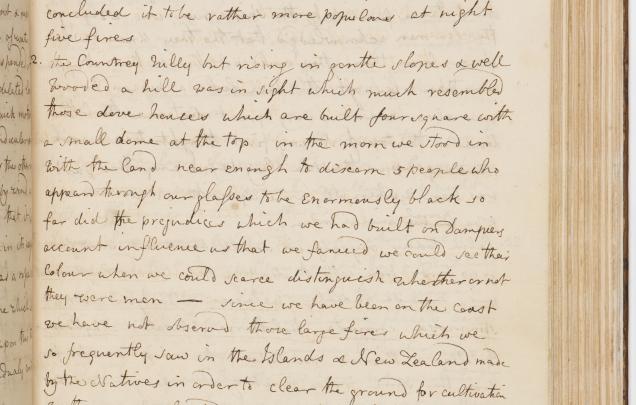
Key inquiry question #1
Why did Gweagal people and the Endeavour crew see the events of 1770 differently?
People see things differently
During a journey of 1050 days, the Endeavour’s captain, Lieutenant James Cook, Joseph Banks and the crew were only in Kamay (Botany Bay) for eight days. This was a very short time in their lives and in the history of the Gweagal people, who have lived in the area for thousands of years.
The Europeans misunderstood many things during their time at Kamay. It was on the basis of this confusion that lots of decisions were made by the British in later years. These decisions would have enormous impacts on the lives of Aboriginal people and everyone who has come to live in Australia.
People see things differently, all the time; even people who have come from the same country, the same time period or the same family. In 1770, Aboriginal people’s way of living, their values and the way they looked at the world were very different to Europeans’. It was as if the two groups of people didn’t just SPEAK different languages, rather they LIVED different languages.
When the crew of the Endeavour looked at the Gweagal people of Kamay and how they lived, they saw something very different to how the Gweagal people saw themselves.
Look at the three images below.
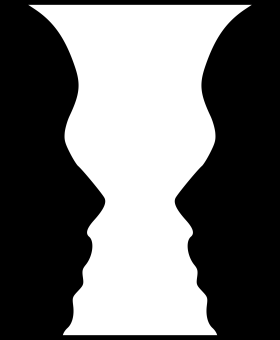
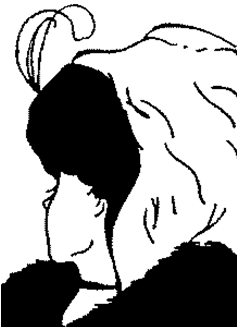
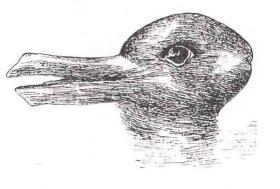
For each image, answer the following questions:
- What do you see straight away in the image?
- Ask another person what they see.
- Is it the same or different to what you saw?
For each picture, there are two things you could see: the first, a vase or the profile of two faces looking at each other, the second a young lady or an old lady and the third a duck or a rabbit. Look again at the images and see if you can spot both.
It is very easy to assume what you see is the same as what everyone else sees and that what you see is ‘right’. There were many misunderstandings between the Europeans and Gweagal people because they saw things so differently. These misunderstandings began before the two even met.
The mysterious smoke
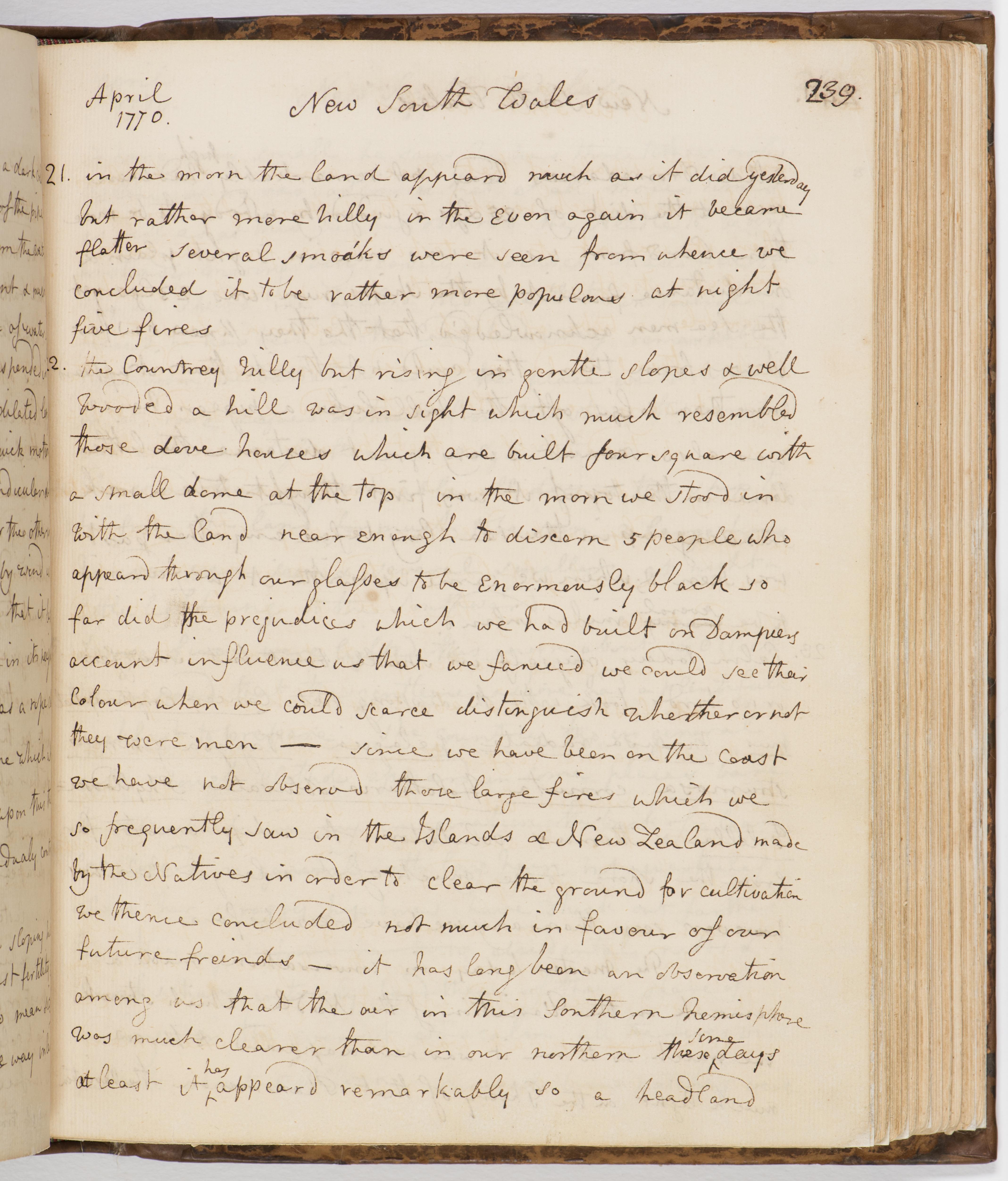
The first sighting of the Australian mainland made by the crew of the Endeavour was the east coast of Victoria. The crew of the Endeavour named this point Point Hicks after Zachary Hickes, the second Lieutenant (the second in command of the Endeavour). It was Zachary who apparently spotted land first.
As they sailed north towards Kamay, the crew of the Endeavour noticed smoke from little fires dotted along the coastline. Joseph Banks talked about these fires in his diary quite a few times. Read some of those mentions, below:
21 April, 1770: In the morn the land appeard much as it did yesterday but rather more hilly; in the even again it became flatter. Several smoaks were seen from whence we concluded it to be rather more populous; at night five fires.
25 April, 1770: Large fires were lighted this morn about 10 O’Clock, we supposd that the gentlemen ashore had a plentifull breakfast to prepare... All the fires were put out about 5 O’Clock...
26 April, 1770: …Fires were seen during the day the same as yesterday but none so large…
27 April, 1770: …In the course of the night many fires were seen.
28 April, 1770: … A small smoak arising from a very barren place directed our glasses that way and we soon saw about 10 people, who on our approach left the fire and retird to a little emminence where they could conveniently see the ship.
You can also see some more mentions of the Endeavour crew seeing smoke, in our exhibition, Eight Days in Kamay, here.
Answer the following question:
- Why do you think there was smoke and fire visible all along the coast as the ship sailed along? Brainstorm a list of ideas.
Joseph Banks had an idea about what the smoke could mean. On 22 April 1770, as they sailed up the coast, he wrote about it in his diary:
Since we have been on the coast we have not obsevd those large fires which we so frequently saw in the Islands and New Zealand made by the Natives in order to clear the ground for cultivation; we thence concluded not much in favour of our future friends.
Look at the original page of his diary, by clicking on the collection item below.
This diary is part of the collections of the State Library of NSW. Joseph Banks’ handwriting is very difficult to read, isn’t it? Can you find the section on the page where he has written the quote above?
Cultivation is the digging up of the land in order to grow crops for food production. Sir Joseph Banks decided that because the fires weren’t very big it must have meant that the Aboriginal people were not growing lots of crops.
Answer the following question:
- What do you think he meant when he said he ‘concluded not much in favour’ of Aboriginal people? Why did he think this?
Click on the link here to go to an audio recording in our exhibition, Eight Days in Kamay. In this recording, Senior Gweagal knowledge holder Shayne Williams talks about why the Aboriginal people were lighting the fires. Listen to the recording.
Answer the following questions:
- Was the smoke about clearing land for cultivation (agriculture)?
- What was the purpose of the smoke?
- What were the other ways the Aboriginal people of coastal New South Wales were spreading the news?
- Who saw whom first, do you think?
Welcoming visitors
Have you ever noticed when you go to someone else’s home they sometimes have rules that are different to your home? Some families don’t like people to wear their shoes indoors. In some homes, people can eat dinner in front of the television while in other homes everyone has to sit around a table together.
- Brainstorm a list of rules that you have noticed are different to those in your home (for example, at a friend’s home, or even your grandparents’ home)
Aboriginal people have a very important set of rules, called ‘protocols’. These rules are all about what people do when they go to someone else’s home. For Aboriginal people, rather than these rules being about an individual house, they are about their country. For Aboriginal people, country is home.
Click on the link here to go to a story in our exhibition, Eight Days in Kamay, which talks about the Aboriginal people’s rules around visitors to their home.
Answer the following questions:
- What is the three-word name for the protocols (rules) around people coming into Aboriginal people’s homes (country)? (Hint: It is the title of the story)
- What are the reasons for these rules?
The story says, ‘it must have been extremely frustrating to be unable to communicate these protocols in a way that the strangers on the Endeavour could understand’. Answer the following question:
- Why couldn’t the Gweagal people just tell the crew of the Endeavour about the rules for their country?
Write a short diary entry, imagining that one of your friends has come to your house. Not only did they not listen to or obey any of the rules of your house, but they did the exact opposite of what you asked them to do, like they couldn’t even hear you talking. What happened? How did it make you feel?
Did you know this learning activity was just one in a series? To find more, click here.